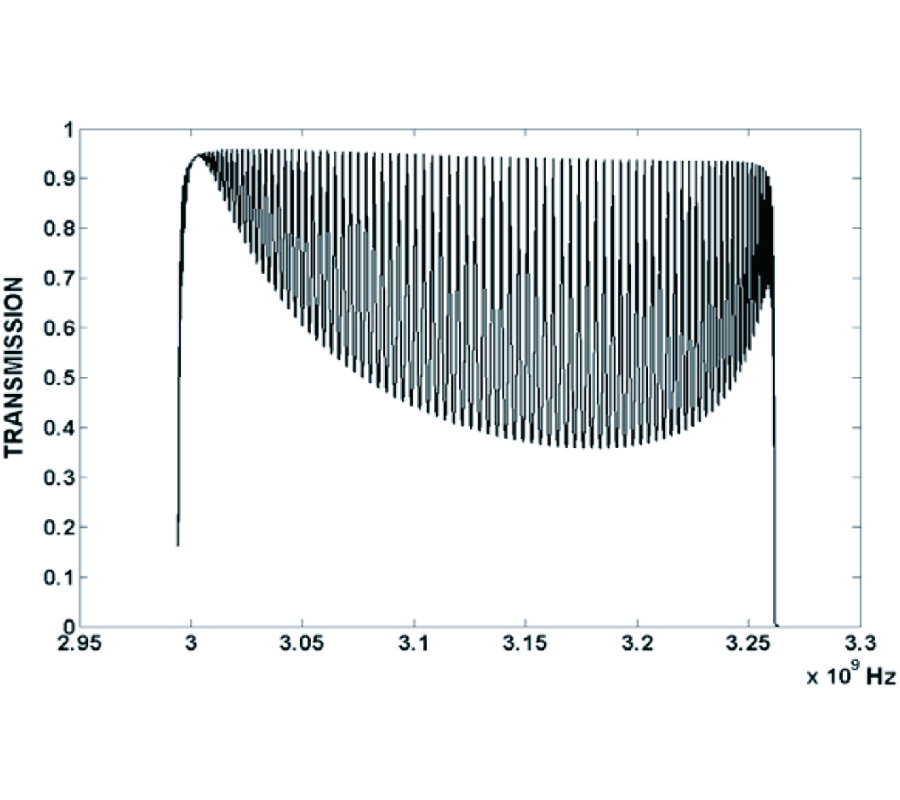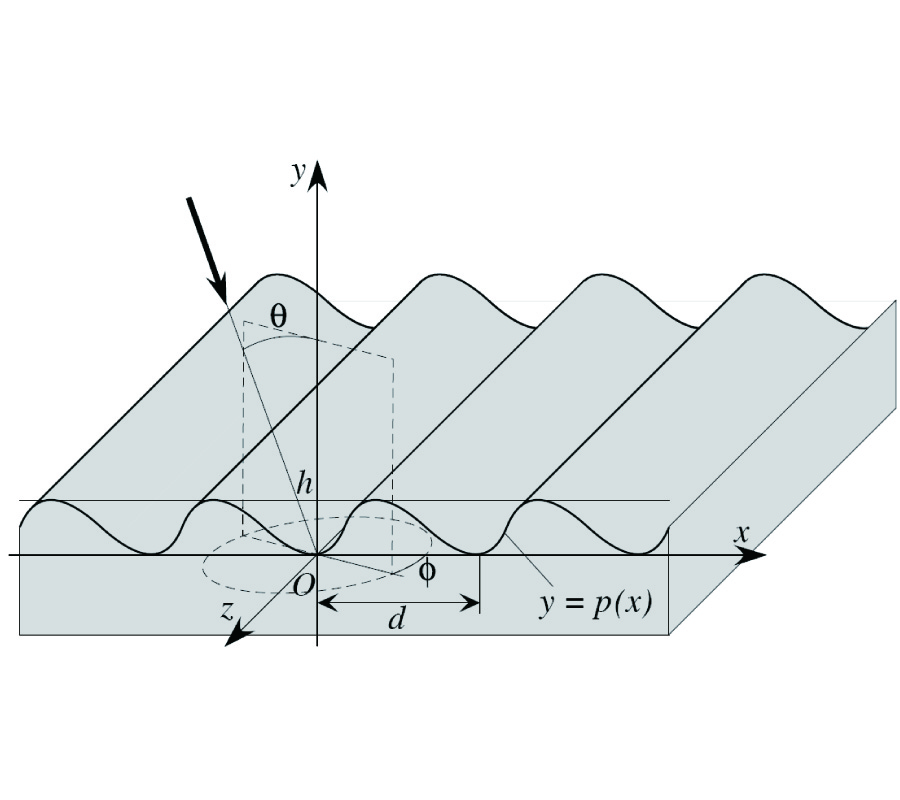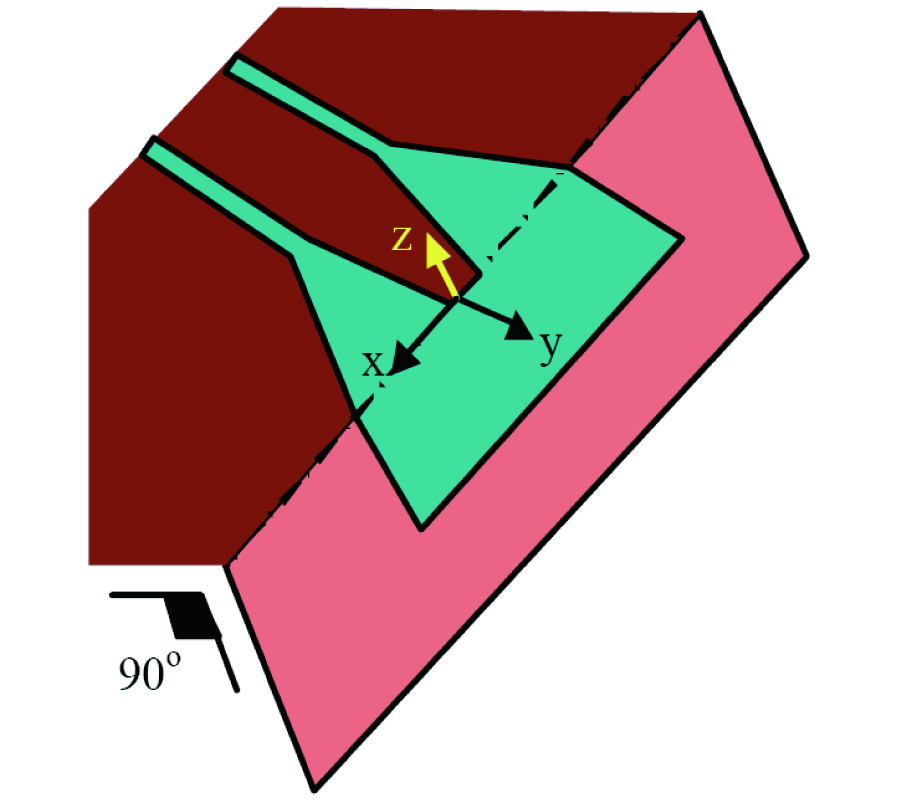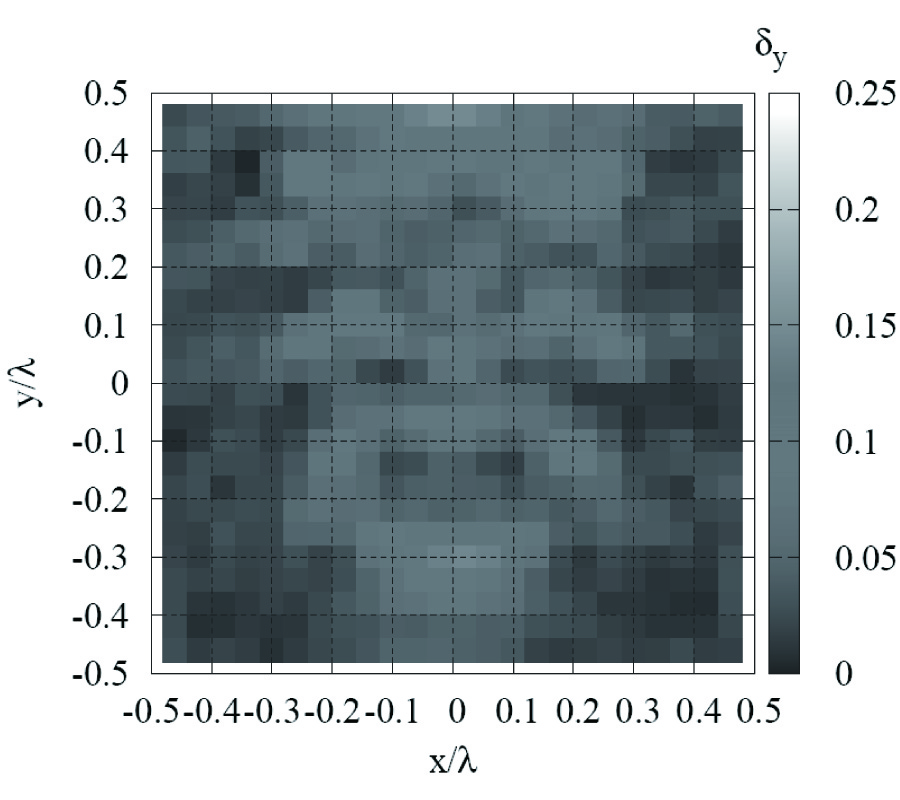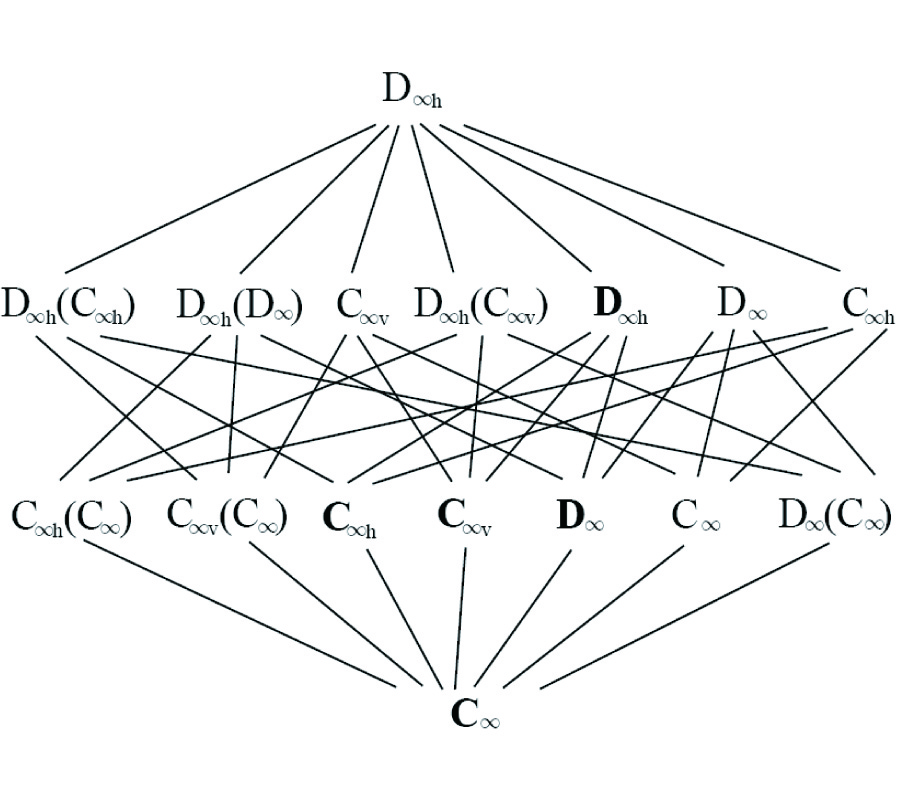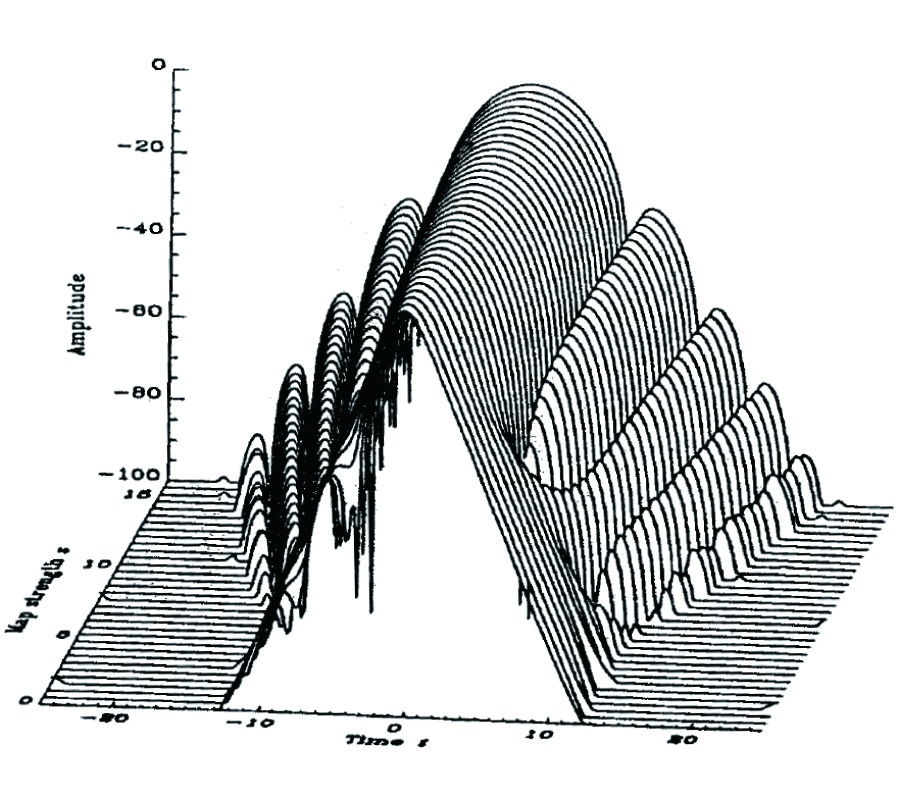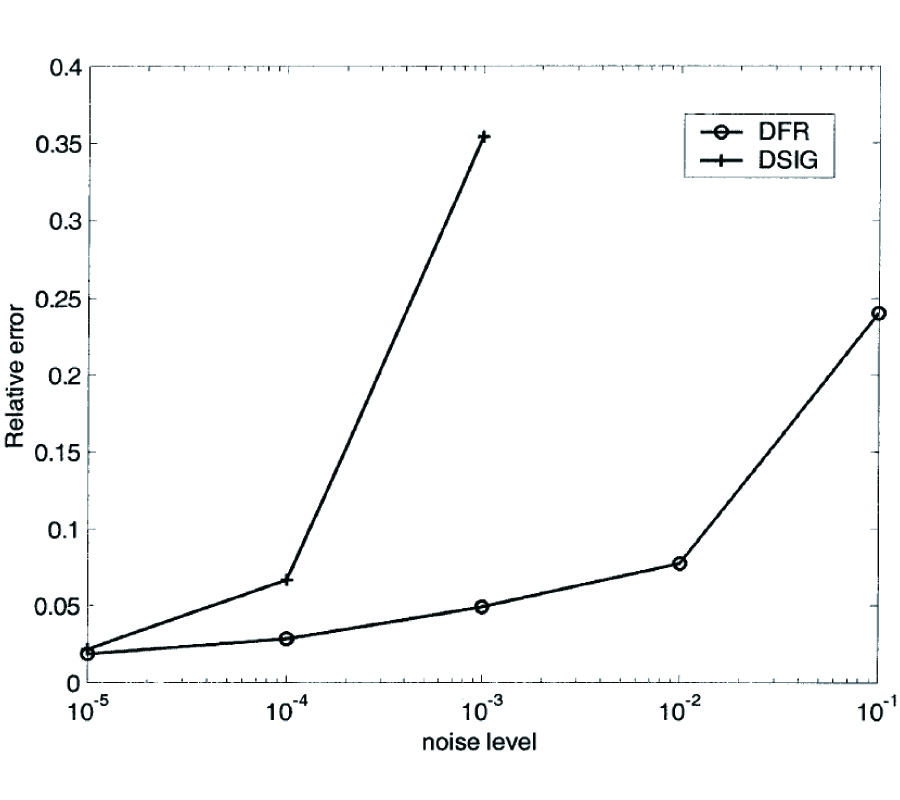Pulse Compression Using a Periodically Dielectric Loaded Dispersive Waveguide
Efstratios Thirios,
Dimitra Kaklamani and
Nikolaos Uzunoglu
The study of periodically dielectric-slab-loaded TE10 waveguide structures of conductive walls and finite length is carried out by using wave analysis techniques.The principal aim is to design and construct a highly dispersive waveguide keeping losses to a minimum. Passing a properly frequency modulated wave through this waveguide, pulse compression phenomena take place. Frequency modulated waves, incident to a finite length periodic loaded waveguide, are studied.The aim is to achieve optimum pulse compression, by taking into account all wave phenomena involved. In order to minimize the reflected (at the input) and maximize the transmitted (at the output) waves of the compressor structure, a staggered-tapered structure of dielectric slabs inside the waveguide is utilized to match the incident waves. The slab longitudinal discontinuity nature prevents the appearance of field singularity points that could hinder the operation of the compression mechanism. An exact Fourier analysis is carried out to compute the compressed wave field intensities.Optimization techniques are used to achieve the best compression and matching conditions for various realistic dielectric materials, having permittivities εr in the range of 9 to 36 and loss factors tan(δ) in the range of 0.01 to 0.00001. Experimental results, obtained by carrying out measurements on prototype waveguide structures, built in our laboratory, present pulse compression phenomena, but do not show good agreement with theory.
